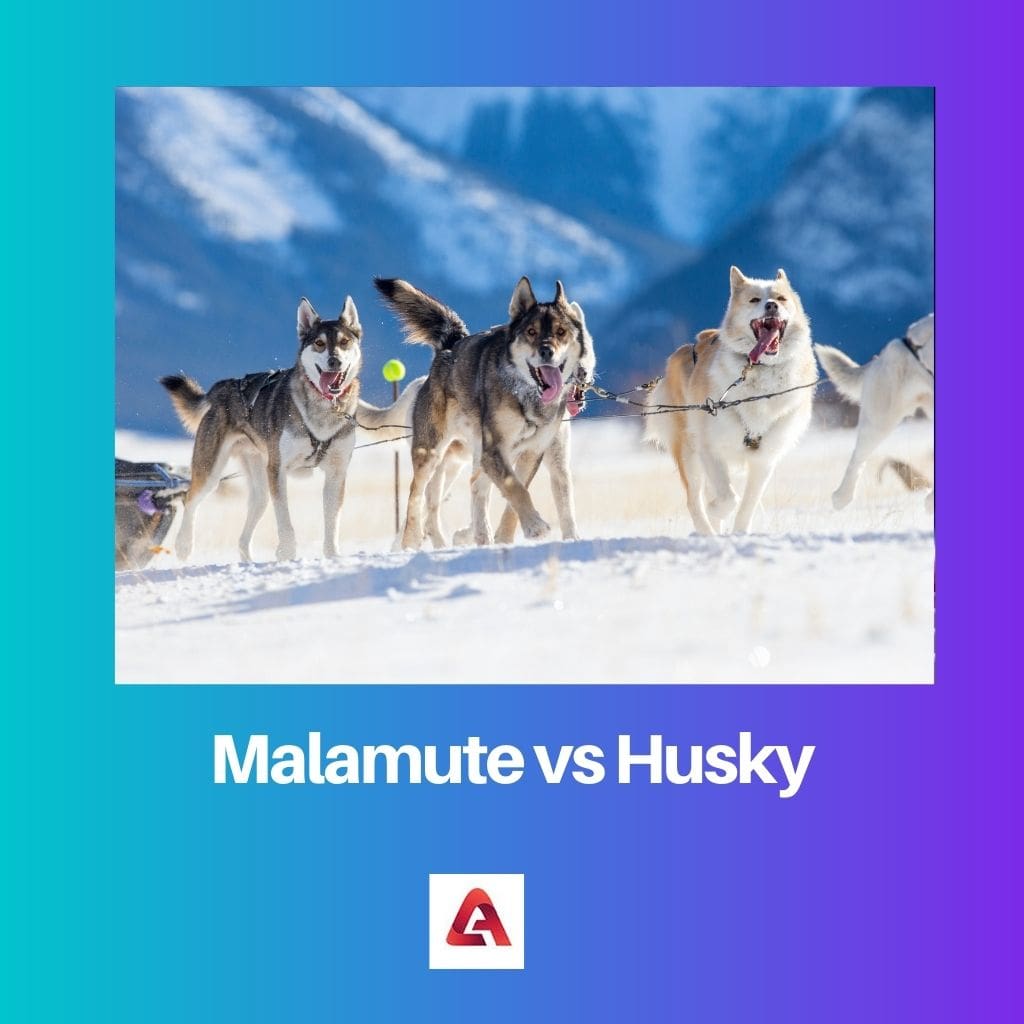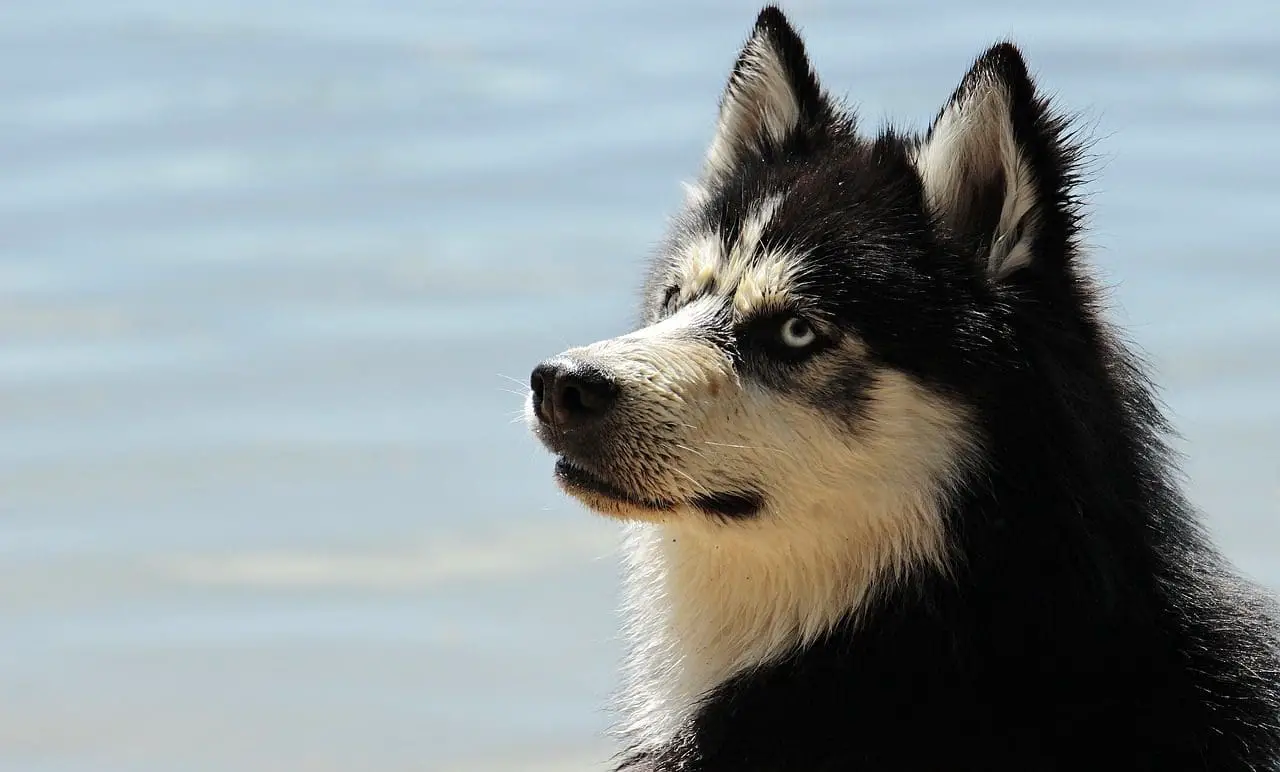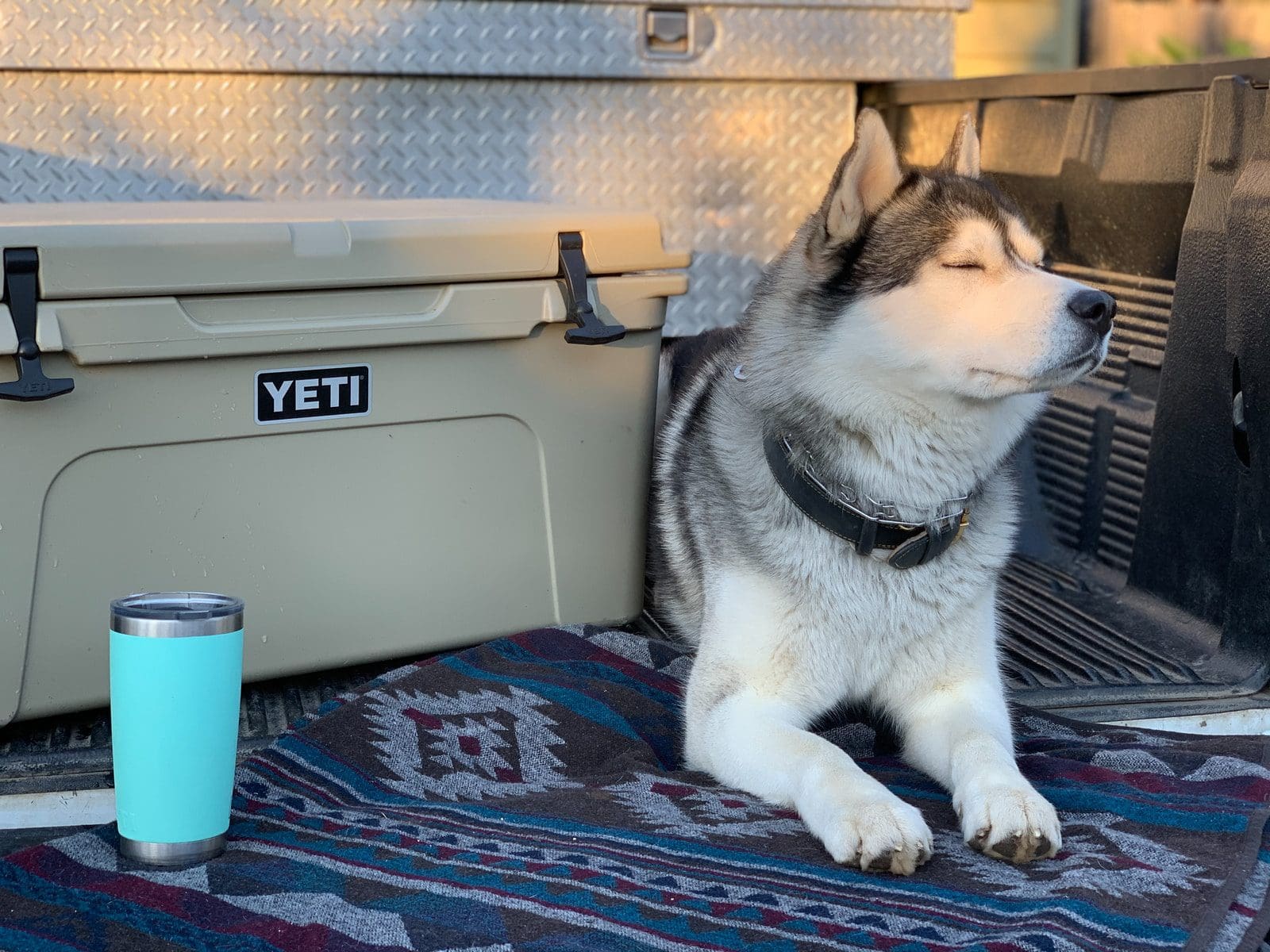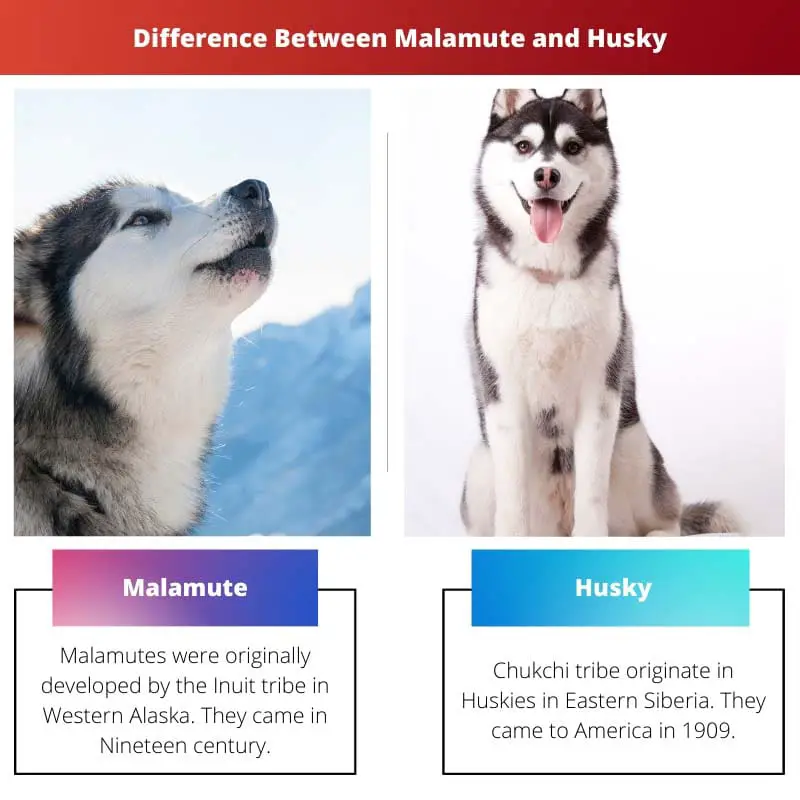Malamutes are larger and more robust than Huskies, built for heavy hauling and endurance in harsh climates. Huskies, on the other hand, are more agile and known for their speed, originally bred for sledding over long distances.
Key Takeaways
- Malamutes and huskies are breeds of domesticated dogs used for sledding and other outdoor activities.
- Malamutes are bigger and more muscular than huskies, with thicker coats and broader heads.
- Huskies are more agile, have thinner coats, and are used for racing.
Malamute vs Husky
The difference between Malamute and Husky is their behaviour. Malamutes prefer to live a content life with humans, whereas huskies like to hang out with other dogs and are more friendly. Husky has a healthier and prolonged lifespan than Malamute. Malamute is more enormous and heavier than a Husky. On the other hand, the husky is more volatile and active.

Comparison Table
| Feature | Malamute | Husky |
|---|---|---|
| Size | Larger and stockier | Medium-sized and leaner |
| Weight | Males: up to 85 lbs (39 kg), Females: up to 75 lbs (34 kg) | Males: up to 60 lbs (27 kg), Females: up to 50 lbs (23 kg) |
| Height | Males: up to 25 inches (64 cm), Females: up to 23 inches (58 cm) | Males: up to 23.5 inches (60 cm), Females: up to 22 inches (56 cm) |
| Coat | Thicker, double coat with longer fur | Double coat with medium-length fur |
| Color | Primarily grey and white, with variations of black and brown | Black and white, grey and white, red and white, with varying facial markings |
| Eyes | Brown | Brown, blue, or one of each |
| Temperament | More independent, stubborn, less vocal | Friendly, outgoing, vocal |
| Energy Level | High, but less athletic than Huskies | Very high, athletic, and energetic |
| Trainability | More independent and challenging to train | Easier to train due to their eagerness to please |
| Working Purpose | Originally bred for hauling heavy sleds | Originally bred for pulling lighter sleds over long distances |
| Suitability for Families | Can be good with children, but require experienced owners due to their independence | Can be good with children, but require an active lifestyle and proper training |
What is Malamute?
The Alaskan Malamute is one of the oldest Arctic sled dog breeds, with a rich history dating back thousands of years. Originating from the Inuit tribes of Alaska, they were bred for their strength and endurance to haul heavy loads over long distances in harsh Arctic conditions. Malamutes were essential to the survival of these tribes, aiding in transportation, hunting, and protection.
Physical Characteristics
Malamutes are large and powerful dogs, typically weighing between 75 to 100 pounds (34 to 45 kilograms) and standing 23 to 25 inches (58 to 63 centimeters) tall at the shoulder. They have a thick double coat consisting of a dense undercoat and a coarse outer coat, providing insulation against the cold. Their distinctive features include a broad head, erect ears, and a plumed tail that curls over their back.
Temperament and Behavior
Known for their friendly and affectionate nature, Malamutes are loyal and devoted companions to their families. They possess a strong pack instinct and thrive in social settings, enjoying the company of both humans and other dogs. However, their independent streak and intelligence can sometimes result in stubbornness, requiring consistent training and positive reinforcement techniques. Malamutes are energetic and require regular exercise to keep them mentally and physically stimulated, making them best suited for active households with ample space to roam and play.
Working Abilities
As working dogs with a rich heritage in sledding and hauling, Malamutes excel in activities that tap into their natural strength and endurance. While they may not match the speed of breeds like Huskies, they are capable of pulling heavy loads over long distances with ease. Today, they are often involved in activities such as weight pulling, backpacking, and skijoring, showcasing their impressive working abilities and strong bond with their human companions.

What is Husky?
The Siberian Husky, often simply referred to as the Husky, is a breed that originated in northeastern Siberia, Russia. Bred by the Chukchi people, an indigenous tribe, these dogs were developed to pull sleds over long distances through the harsh Arctic terrain. Their endurance, speed, and ability to withstand cold temperatures made them invaluable companions to the Chukchi people, aiding in transportation, hunting, and even serving as family guardians.
Physical Characteristics
Huskies are medium-sized dogs, typically weighing between 35 to 60 pounds (16 to 27 kilograms) and standing 20 to 23.5 inches (51 to 60 centimeters) tall at the shoulder. They have a dense double coat designed to protect them from extreme cold, consisting of a soft undercoat and a longer, coarser outer coat. Their striking appearance often includes a variety of coat colors and distinctive facial markings, with almond-shaped eyes that can range in color from blue to brown or even heterochromatic (two different-colored eyes).
Temperament and Behavior
Renowned for their friendly and outgoing nature, Huskies are affectionate and sociable dogs that thrive on human companionship. They are known for their intelligence, independence, and mischievous streak, which can sometimes translate into stubborn behavior if not properly trained and stimulated. Huskies are highly energetic and require ample exercise and mental stimulation to prevent boredom and potential destructive behaviors. While they are generally good-natured and gentle with people, their strong prey drive and tendency to roam make proper containment and supervision essential.
Working Abilities
Huskies possess a remarkable combination of endurance, strength, and speed, making them exceptional working dogs in various capacities. They excel in sled dog racing, with their agility and stamina allowing them to cover long distances at impressive speeds. Additionally, Huskies are often utilized in activities such as skijoring, canicross, and agility competitions, showcasing their versatility and athleticism. Despite their working heritage, Huskies also make wonderful family pets, provided they receive sufficient exercise and mental stimulation to fulfill their innate needs.

Main Differences Between Malamute and Husky
Size
- Malamutes: Larger and heavier.
- Huskies: Smaller and lighter.
Physical Build
- Malamutes: Robust and stocky.
- Huskies: Lean and agile.
Coat
- Malamutes: Thicker and denser double coat.
- Huskies: Typically have a lighter coat.
Temperament
- Malamutes: Laid-back and independent.
- Huskies: Friendly and outgoing.
Working Abilities
- Malamutes: Excel in strength and endurance tasks.
- Huskies: Renowned for speed and agility.
Energy Levels
- Malamutes: Moderate energy levels.
- Huskies: High energy levels.
Trainability
- Malamutes: Stubborn and independent-minded.
- Huskies: Intelligent but may be mischievous.
Purpose
- Malamutes: Historically bred for heavy hauling and endurance.
- Huskies: Developed for speed and efficiency in sled pulling.
Appearance
- Malamutes: Broader heads and thicker coats.
- Huskies: More varied coat colors and striking facial markings.





